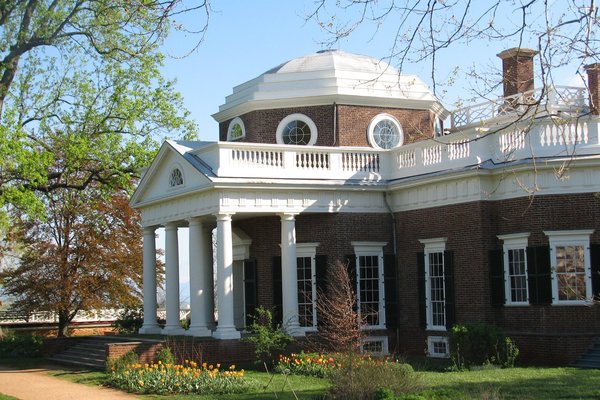United States of America
Monticello
Monticello and the University of Virginia in Charlottesville are outstanding examples of neoclassical architecture.
This plantation house and academic village are two major works designed by Thomas Jefferson (president, writer, and architect). He was inspired by Andrea Palladio's 'Four Books of Architecture' and several study trips to Europe. Monticello, based on a Roman design, was his own villa. The Academical Village of the University of Virginia was based on Jefferson's educational ideals.
Community Perspective: the interior of the house is usually visited on a guided tour (“bearable” as it lasts only 30 minutes and the guides are knowledgeable), but you can explore the other areas on your own. Getting out to the University of Virginia buildings is worth the effort too. Much of the site (and the inscription) is about Jefferson as a person, a dilemma that is addressed in Kyle’s review.
Site Info
Official Information
- Full Name
- Monticello and the University of Virginia in Charlottesville (ID: 442)
- Country
- United States of America
- Status
-
Inscribed 1987
Site history
History of Monticello
- 1987: Inscribed
- Inscribed
- Type
- Cultural
- Criteria
- i
- iv
- vi
Links
- UNESCO
- whc.unesco.org
- Official
-
- monticello.org — Monticello
All Links
UNESCO.org
- whc.unesco.org — whc.unesco.org/
Official Website
- monticello.org — Monticello
News Article
- March 9, 2017 washingtonpost.com — Monticello is making room for Sally Hemings.
- May 3, 2015 abcnews.go.com — Rebuilt Slave Sites Being Unveiled at Jefferson's Monticello
- April 15, 2009 baltimoresun.com — New visitor and education center opens at Monticello
Community Information
- Community Category
- Secular structure: Science and Education
Travel Information
Washington DC Hotspot
Recent Connections
-
Perfect Inscriptions
1987 -
Obelisk
Jefferson's grave has an obelisk-shaped… -
International Coalition of Sites of Conscience
Connections of Monticello
- Individual People
-
-
Georgia O'Keeffe
Georgia O'Keeffe painted portions of the Academical Village and the Rotunda while at the University of Virginia between 1912 and 1914
-
- Trivia
-
-
On Coins
See en.numista.com
-
On Banknotes
2 US dollar (reverse side), 1928-1966See en.wikipedia.org
-
Modelled after
The Rotunda was modelled after the Pantheon in Rome. -
Built or owned by British
First occupied in 1770 when Jefferson was still British!
-
- Architecture
- World Heritage Process
-
-
Perfect Inscriptions
1987 -
Extensions on Tentative List
Poplar Forest, Bedford County and Virginia State Capitol, Richmond
-
- Religion and Belief
-
-
Secret Societies
Freemasonry
-
- Human Activity
-
-
Tobacco
-
Slavery
Jefferson kept slaves at Monicello -both in the fields and in the house "Thomas Jefferson made a habit of inspecting his plantation in the afternoon to monitor the work of the 150 slaves who worked at Monticello and his outlying farms. Always interested in measurements and record-keeping, Jefferson made extensive notations about his slaves and their duties in his Farm Book and Memorandum Books. For instance, he noted the rations his overseer distributed, the number of yards he purchased for clothing, the daily task required by particular slaves, and the cost of items purchased for use in the kitchen."
-
- Constructions
- WHS on Other Lists
- Timeline
-
-
Built in the 18th century
Monticello (1769?1809)
-
- WHS Hotspots
-
-
Washington DC Hotspot
Daily bus service (3 hours), intermittent train service (2-3 hours) to Charlottesville
-
- Science and Technology
-
-
Libraries
Rotunda used to be the University librarySee www.virginia.edu
-
Universities
University of Virginia
-
- WHS Names
-
-
Named after individual people
Sophia Charlotte of Mecklenburg-Strelitz, the queen consort of King George III of the United Kingdom; For "University of Virginia": Virginia was named after Queen Elizabeth I of England the "Virgin Queen"
-
News
- washingtonpost.com 03/09/2017
- Monticello is making room for Sall…
- abcnews.go.com 05/03/2015
- Rebuilt Slave Sites Being Unveiled…
- baltimoresun.com 04/15/2009
- New visitor and education center o…
Recent Visitors
Visitors of Monticello
- 2Flow2
- acormier
- Adam Hancock
- akacesfan
- Alejandro Lau
- Alexander Lehmann
- Alex Baranda
- Alex Goh
- AmyAbroad
- Ana
- AndreaTLV
- Antonio J.
- Argo
- Atila Ege
- bergecn
- bethready
- Bill Maurmann
- Bin
- blake
- Brendan Carroll
- Brett Baumann
- brornt
- Can SARICA
- Carl Le Boeuf
- Carlo Sarion
- Casey
- Chinmaya
- ClaraHH
- Cluckily
- Cobaltrage
- Cody Ayers
- Colossus
- cophbulls
- crilly
- ctravel
- Cyberczar
- Daniel R-F
- dave wood
- David Aaronson
- David Scott King
- Dimitar Krastev
- dmscanlan
- Dolemite92
- Don Irwin
- DonQuijote
- Dwight Zehuan Xiao
- Els Slots
- Eric Lurio
- Fam39
- Fan Yibo
- Gary Arndt
- GeorgeIng61
- Hadrianus
- H Beswick
- Hdwilsonau
- Hughes1920
- Iain Jackson
- Ian Cade
- IreneKD
- Jacob Choi
- Janos
- Jan Zimmermann
- Jarek Pokrzywnicki
- Jasam
- Jason Boulette
- Jasonfd247
- Jawnbeary
- Jay T
- jballard650
- Jeanne OGrady
- Jezza
- JJ10
- Joel on the Road
- Jonas Hagung
- Justin
- KarenBMoore
- Karito Vies
- Kbecq
- KeithBailey
- Kelly Rogers
- kelseyyurek
- Kim, Soo-youn
- Kjlauer
- kjluebke
- Kjsisney
- Klaus Freisinger
- Kurt Lauer
- Kyle Magnuson
- Lameduck99
- Lembu
- leroykstlj
- lichia
- Lillybett
- lindaann
- Linz
- Lithobates
- Little Lauren Travels
- ljowers
- Loic Pedras
- Ludvan
- Luis Filipe Gaspar
- lynnz317@aol.com
- Malgorzata Kopczynska
- Mardigny
- Marty
- maryhattie
- Matthewrw
- Matthewsharris
- MaxHeAnouBen
- Mazeman
- M.HATADA
- Mia esguerra
- Michael Ayers
- MichaelH
- Michael Novins
- michaelsballard
- Michael Turtle
- Mihai Dascalu
- MMM
- Morodhi
- MystRivenExile
- Nick Kuzmyak
- Nicolas
- Nicole Lampos
- Nihal Ege
- Nolan B.
- Patrik
- Pchxiao
- PeterA
- pghgeekgrrl
- Philipp Peterer
- Pink Bunny
- pontobaggins
- pressdm
- Priyaranjan Mohapatra
- Purrfect
- Randi Thomsen
- reddargon
- rivr
- Roel Sterken
- Roger Ourset
- Roman Bruehwiler
- Roman Raab
- Samy G
- sbshipway
- Schnitzel
- Shandos Cleaver
- shoaibmnagi
- Squiffy
- Stan
- Sutul
- Svein Elias
- Tamara Ratz
- Ted Coombs
- TheDarlingLife
- TheTravelingRanger
- Thomas Buechler
- Thomas van der Walt
- Timothy C Easton
- Tommy W
- tony0001
- Toxicologist
- triath
- Tsunami
- ValiaVeweth
- Vanessa Buechler
- Velvetlapis
- Waxwing
- WILLIAM RICH
- Xiquinho Silva
- Yi Han Goh
- ZCTLife
- Zoë Sheng
Community Reviews
Show full reviews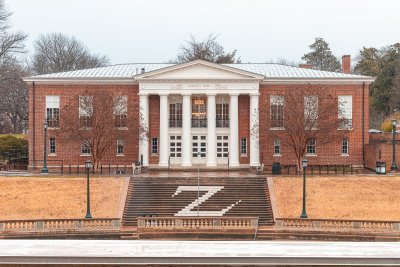
This site was the first of the few UNESCO sites I visited during my trip to the US in Dec 2024. It made for a great stop on my way to spending the holidays with family in Virginia. I made sure that we visited both Monticello and the University of Virginia campus, which I think is the best way to really appreciate the OUV of this site.
Monticello
Monticello was Thomas Jefferson's primary plantation and house, situated on a hill or a small mountain ('Monticello' in Italian) southeast of Charlottesville. We visited the site on a sunny but bitterly freezing afternoon on the first day of our stay in the town. The entrance to the site and the David M Rubenstein visitor centre sit just below the hill. It is highly recommended to watch the introductory film being screened at the theatre, as it gives you a rough introduction to Thomas Jefferson, his time in the plantation, and the plantation itself. You may also want to visit the Robert H. and Clarice Smith Gallery, which has excellent exhibitions featuring the fruits of Jefferson's ideas and work.
To access the house, you would have to join a tour or purchase the Grounds Ticket, which allows you to wander around the gardens and grounds at your own pace. In our case, we booked the Highlights Tour, a 45-minute guided tour that would give you an overview of the president, a tour of the first floor spaces of …
Keep reading 0 comments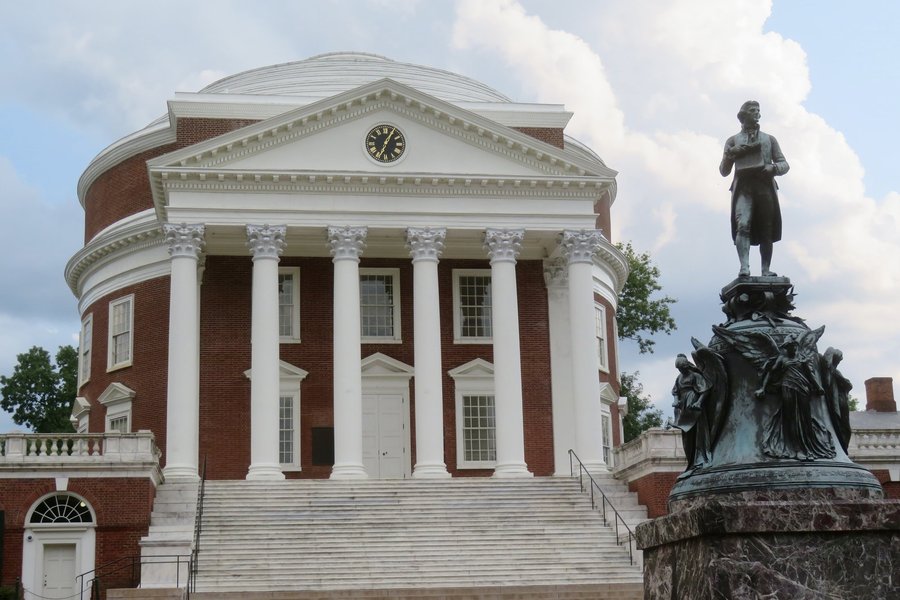
Having booked my tickets online well in advance for Monticello and making sure I had ample time in Charlottesville (both preferable), I felt this might be an interesting first stop as we made our way South. Charlottesville, which is dominated by Jefferson's legacy is in the midst of an ongoing re-examination of the man and Historical truths long ignored (particularly for visitors pre-1999 to Monticello). Ta-Nehisi Coates (author of We Were Eight Years in Power, The Message), after visiting Monticello said, “They will tell you the truth. There is a broad and growing movement to tell the truth.” When visiting Monticello, you will experience tours that highlight Jefferson the Slaver, Writer, Architect, and President. The Hemings family will be featured prominently, including both John Hemings and Sally Hemings (mother of at least six of Jefferson's children). From 1993 to 2001 was the initial period where the interpretation of Monticello began to change to tell a more complete History of Jefferson and the people who lived there.
The Second Introspection 2017:
After the "Unite the Right" rally in Charlottesville in August 2017, the city has experienced a racial reckoning even more acute than most American communities during the past few years. In fact, the week before we arrived, the Robert E. Lee Statue was finally removed nearly four years after the infamous rally that sought to protect it. Afterwards, the city council renamed the park and other Confederate Monuments were taken down. The Robert E. Lee statue was commissioned in 1917 …
Keep reading 0 comments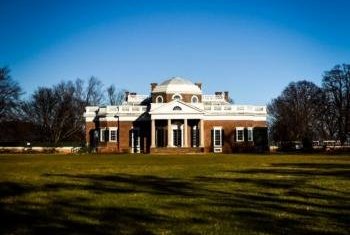
In January I took an East Coast road trip in the US to see friends I'd left when I started traveling, deal with some paperwork stuff, and go on a work trip. I was able to see three UNESCO sites: Independence Hall, Monticello, and the Statue of Liberty. Monticello was the only new one on the trip, but seeing a trio of very patriotic places back-to-back was really fun.
Monticello is the hardest place for me to see of the three though. Since it was a working plantation that housed hundreds of enslaved peoples, it was very hard to separate Jefferson the philosopher president from Jefferson the slaver.
Keep reading 0 comments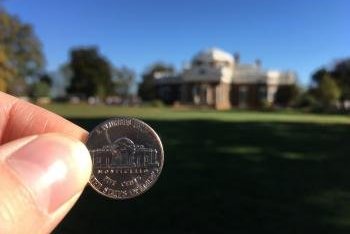
With 4 days left in my October 2016 trip to the USA I had arranged for myself an excursion to a third WHS of the trip. I caught a subway and a bus to New York’s domestic-only La Guardia airport to catch an American Eagle flight 300 miles southwest to the city of Charlottesville, Virginia.
On arrival I took a fairly expensive taxi to my hotel in the city and had a walk around the university's tranquil campus. I read in Christopher Hitchens' biography of Jefferson that his motivation for building the university was to limit the exposure of Southern minds to what he perceived as the propaganda of Northern universities in New England.
The next morning I took another costly cab to Monticello, a few miles outside town. There is a nearby hill that rises higher than Monticello, meaning whoever occupies it would have a great view of Jefferson’s estate. In recent years a developer announced plans to build condos there, but the trustees of Monticello – determined to prevent the surrounding area being despoiled – raised $15 million to buy the land themselves. By happy coincidence, $15 million is exactly the same amount that Jefferson as president paid Napoleon’s France in 1803 to purchase all the lands west of the Mississippi, doubling the size of his country at the stroke of a pen.
Keep reading 0 comments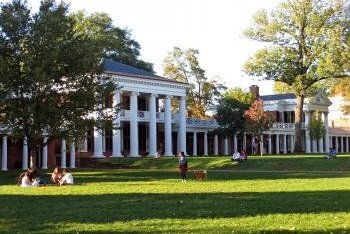
Thomas Jefferson was one of the United States' most fascinating Founding Fathers, not only serving as president and author of the Declaration of Independence, but also displaying keen interests in arts and science, which can be seen in the two components of this World Heritage Site. Monticello is an architectural joy to visit, as the many reviews on this site testify. The Academical Village of the University of Virginia is just as impressive, and is familiar territory for me from visits in my collegiate years. Jefferson intended the Rotunda and the Lawn, which is flanked by two rows of pavilions and dorm rooms, to be an environment in which faculty and students could live and study together, fostering academic growth. The Rotunda, home to classrooms and a beautiful library, remains under reconstruction, but should reopen in 2016. The Lawn is still worth a visit, though, to observe the different neoclassical styles of the pavilions on each colonnaded row. Only students in their final year of college can apply to live on the Lawn--in dorm rooms heated by fireplaces and without bathrooms--and it is considered a privilege to be one of the 54 selected each year. Faculty selected by the University's Board of Visitors live in the upper floors of the pavilions, continuing Jefferson's ideals of a joint learning environment for students and faculty.
Logistics: A car is probably the best way to navigate between these two sites in Charlottesville, Virginia.
Keep reading 0 comments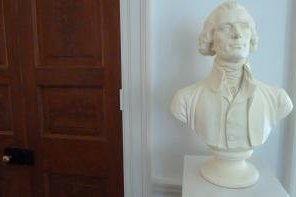
From the moment we flew in to Charlottesville's lovely little airport I was rather taken with this verdant university town.
Our first stop was the university itself. Sadly the rotunda was still being renovated, but it didn't take too much away from the lush ambiance of the central quad. We walked a lap, ducking into the committee room/library, which was pleasant in the way formal Georgian rooms tend to be. After that we grabbed some lunch and second-hand books on the charming high street before heading off to Monticello.
Set atop a grassy hill covered in fog and trees, Monticello was a rather pleasurable place to visit. There is a nice visitor’s centre which helps keep the area around the house quieter. This area has films and displays to explain the life and work of Thomas Jefferson.
Whilst tours around grand homes are some of my least favourite things to do, this one was interesting enough to actually be bearable. I think there were two main reasons for this. First, Jefferson is a much more engaging character than many of the former owners of the European palaces inscribed on the list. Second, the tour was only 30 minutes long so managed to stop before becoming too dull. I always think I am going to enjoy neo-classical architectural sites more than I do, the pleasing proportions and use of space always look good, but I end up finding them a bit dull. Monticello had a similar feel, but some of the …
Keep reading 0 comments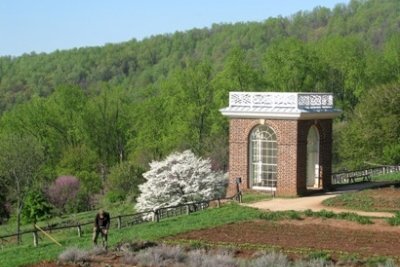
I was already present at Monticello at 8 am, fearing that this may be a very popular attraction. And indeed, a group of schoolchildren also just arrived. Fortunately, they got on their own tour and I didn't see them again. While waiting for the shuttle bus that takes you to the house, I admired the new visitor center that has just opened a few days ago. It has reserved ample room for a huge museum shop. There's also an exhibition about Jefferson as an architect, how he designed and built and where he got his ideas. Well done.
The tour takes about 30 minutes and takes you through the rooms on the ground floor. The house has period furniture in it, though not all belonging to Jefferson. He died bankrupt and much was sold after his death (including his slaves). Via the use of skylights and high windows, the rooms appear very bright.
The tour is quite superficial and deals mostly with Jefferson as a person. After that, you're free to roam the grounds on your own. That includes the underground passages and Mulberry Row, where the laborers and slaves lived.
Later I also paid a visit to the Academical Village of the University of Virginia. I didn't succeed at first (in the morning) because all parking spots in the immediate area were already taken. All those American students with cars of course! So I returned after dinner. It's really worth the effort. The students live in …
Keep reading 0 comments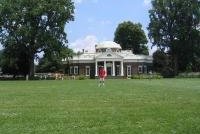
I visited Monticello on a day trip from Washington, D.C. It took a little more than two hours to reach the site by car and another two to get back but it was definitely worth it. The tour of his house and the surrounding areas really gives you a view of Thomas Jefferson's mind. The house is filled with priceless antiques and old books. My only complaint is that the tour sizes are way too big for such a small place; I found myself having to squeeze through people in order to view everything in the many rooms. I did not have time (and the interest) to visit the University of Virginia so I cannot comment on that but Monticello is definitely worth a visit.
Keep reading 0 comments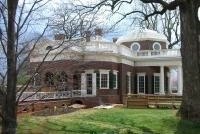
Monticello, which means "little mountain" in Italian, was the home of Thomas Jefferson. This architectural endeavor occupied Jefferson's mind, as he designed the house and supervised its construction, which began in 1769. Jefferson lived in France for five years while serving as an ambassador and so much of Monticello was inspired by the classical houses he saw in Paris. In 1782, a French visitor stated that Jefferson was "the first American who has consulted the Fine Arts to know how he should shelter himself from the weather."
The guides are very well knowledgeable about every nook and corner of the house and landscape. I really felt like I was taking a step back in time and felt very disoriented when I left the mountain to return to "present-time" downtown Charlottesville. If you decide to visit Monticello, I highly recommend not only taking the house tour, but also the garden tour and plantation community tour. The latter focuses on the African-American slaves who worked on the 5,000 acre plantation. The garden and plantation community tours are available from April 1-October 31.
I also suggest that if you have the time, purchase a "Presidents' Pass," which is a discount combination ticket giving you admission to Monticello, Michie Tavern, and Ash Lawn-Highland. The Presdients' Pass costs $26.00 US per person. These three sites are very close to each other. Michie Tavern was the social center of its community in the late 1700s. The tavern's dining room offers a wonderful Midday Fare, which features …
Keep reading 0 comments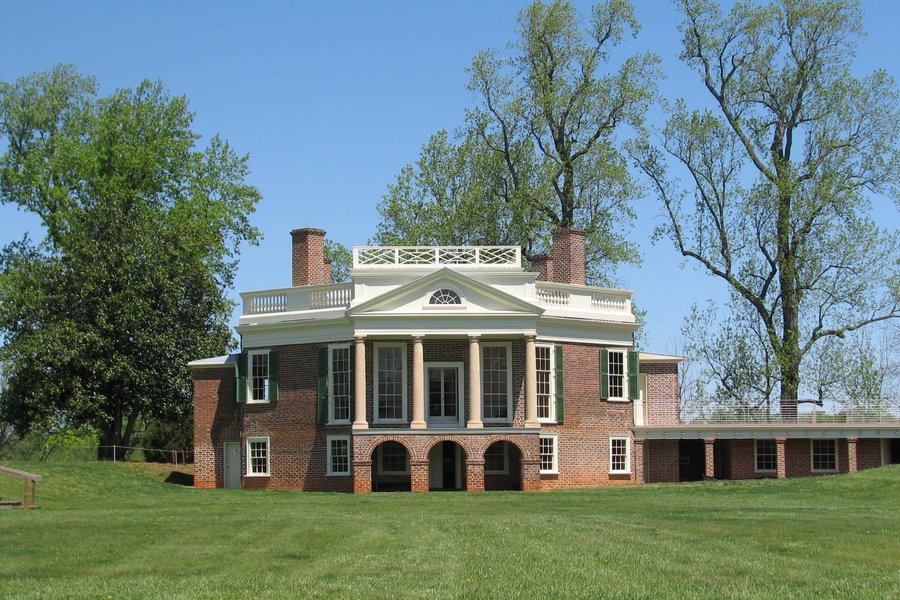
To be in the Washington area and not to take the relatively short trip to Charlottesville, Virginia, is really to miss a great sight. Monticello is one of the most famous residences in the world, and rightly so, since its constructor, Thomas Jefferson, was not only a politician, but also a Renaissance man of the highest order, with numerous hobbies and interests, all of which can be noticed at Monticello. The day I visited was unfortunately very foggy and rainy, but I hear you can see the Blue Ridge Mountains very well from there on a sunny day... Be sure to make the short walk to Jefferson's grave to admire his modest tombstone. He didn't want to be remembered as America's 1st Secretary of State, 2nd Vice President, or 3rd President, but rather as "Author of the Declaration of Independence, of the Statute of Virginia for Religious Freedom, and the Father of the University of Virginia". The latter can be visited as well, and is an interesting example of a classic American university with great architecture (especially the Rotunda). Nearby, the historic Michie Tavern is a touristy, but interesting place to shop and eat.
Keep reading 0 comments
I visited Monticello in April of 1996 with my daughter on her 8th grade Washington DC trip. Monticello was a great experience to see. My daughter and I thought that the surrounding country side around Monticello was beautiful.We also visited the campus of the University of Virginia on a short tour, which I thought was also impressive.
Keep reading 0 comments
I visited Monticello in 1975 and it is one of my favorite memories. You must experience the space to begin to understand the genius of Thomas Jefferson. It is a beautiful and peaceful place, a step back in time.
In 1999, I visited another of Jefferson's houses, Poplar Forest, in Lynchburg, Virginia. It was even more impressive to me than Monticello. It is in the process of a very well-planned and executed restoration. You can see how the structure was originally designed and constructed. Much of the process is well documented in Jefferson's writings to his carpenter. I look forward to visiting again as restoration progresses. I spent one night in Charlottesville on the same trip and foolishly missed an opportunity to visit the University of Virginia. I am now an architecture student and many educators consider a visit to this campus essential to the education of an architect. Virginia is a beautiful state and I am glad to have another reason to return there.
Keep reading 0 comments
